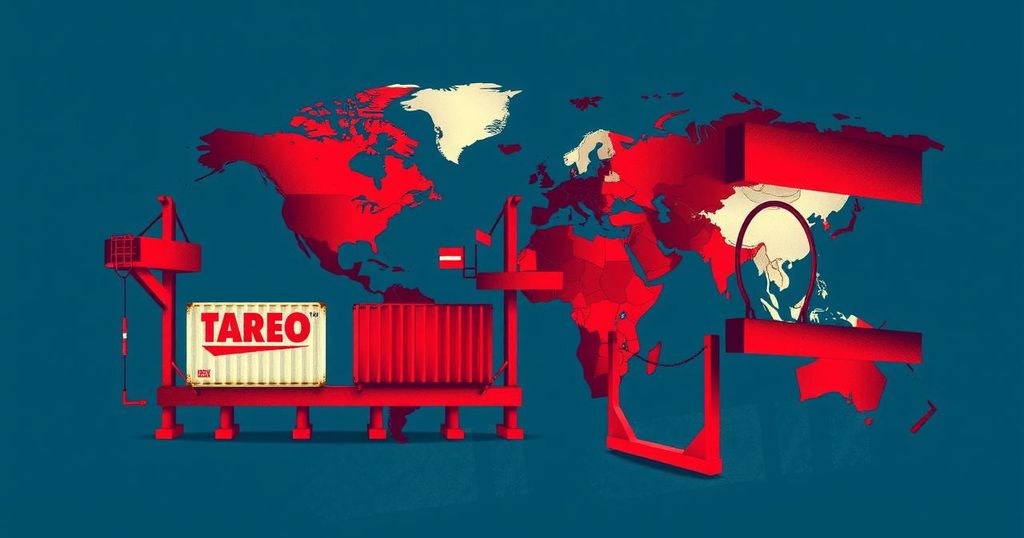Trump Imposes 38% Tariff on Goods from Guyana, Intensifying Trade War

President Trump announced a new 10% baseline tariff on U.S. imports and a 38% tariff on goods from Guyana, escalating trade tensions. This shift could lead to retaliatory measures, increased consumer prices, and economic concerns globally. His statements emphasized the perceived negative impact of international trade on American workers and businesses, introducing significant uncertainty in financial markets.
President Donald Trump recently indicated his intention to implement a 10% baseline tariff on all U.S. imports, alongside elevated rates for major trading partners, escalating the existing trade tensions. Noteworthy among these changes is a 38% tariff imposed specifically on goods imported from Guyana.
This extensive tax on imports marks a significant shift from decades of trade liberalization, potentially isolating the world’s largest consumer market. This strategy may provoke retaliatory actions from trading partners, possibly leading to increased prices for various consumer goods.
Trump characterized this measure as “our declaration of independence” during an event held in the White House Rose Garden, emphasizing his ongoing grievances regarding global trade and its effects on American workers. A range of reciprocal tariffs was outlined, including a 34% tariff on China and a 20% tariff on the European Union, balancing measures against prior duties imposed on U.S. products.
However, further specifics regarding the newly proposed tariffs were not disclosed. As Trump echoed his concerns that international trade negatively impacts American jobs and businesses, the response from financial markets exhibited nervousness, reflecting the uncertain trade landscape established since 1947.
The Trump administration announced that these tariffs would take immediate effect following the announcement, although formal enforcement details were still pending. A previous set of tariffs on automotive imports was confirmed to begin on April 3.
Previously, Trump applied a 20% tariff on all goods imported from China, as well as a 25% tariff on steel and aluminum imports, ultimately affecting approximately $150 billion in products. Administration officials argued that these measures aim to revitalize essential manufacturing sectors within the United States.
Conversely, many economists have voiced concerns that these tariffs may decelerate global economic growth, amplify the likelihood of a recession, and inflate costs for the average American household significantly. Additionally, businesses have reported that the torrents of tariff threats complicate their operational planning. Recent tariff-related anxiety has already curtailed manufacturing activity worldwide and prompted consumers to accelerate their purchases of imported goods to avoid impending price hikes.
In anticipation of the tariff announcement, financial markets experienced volatility, erasing nearly $5 trillion in stock value since February.
In summary, President Trump’s imposition of new tariffs, including a significant 38% tax on goods from Guyana, signifies a pivotal shift in U.S. trade policy. This strategy, while aimed at protecting American industries, raises concerns regarding potential retaliatory actions from trading partners, increased consumer costs, and a slowdown in the global economy. The administration’s approach is generating widespread uncertainty and challenges for businesses reliant on established trade practices.
Original Source: www.stabroeknews.com








